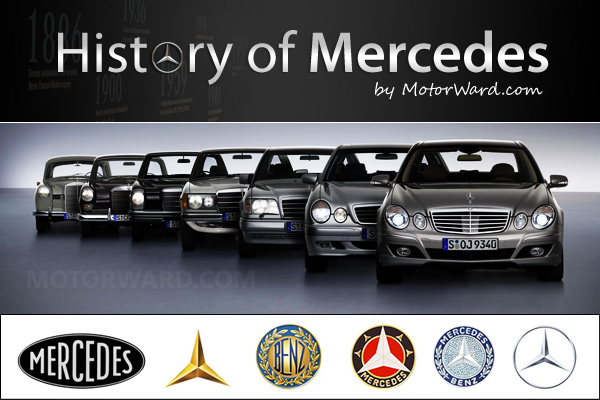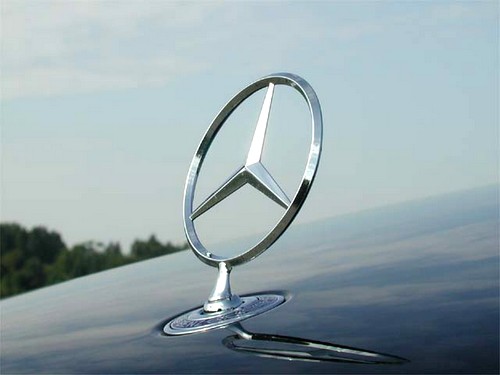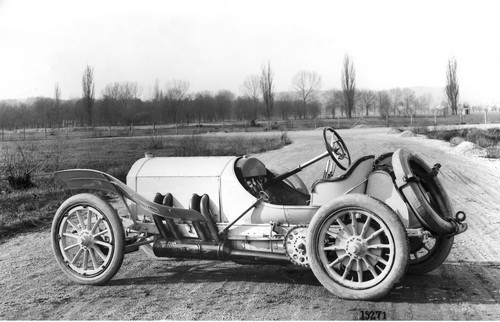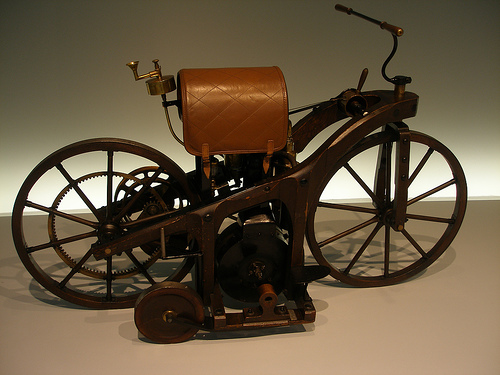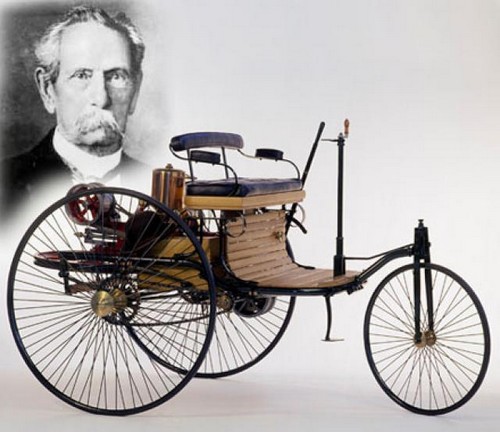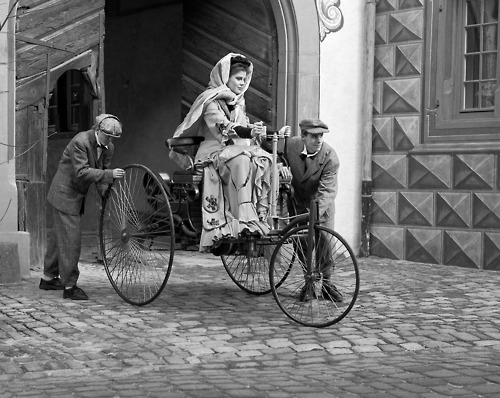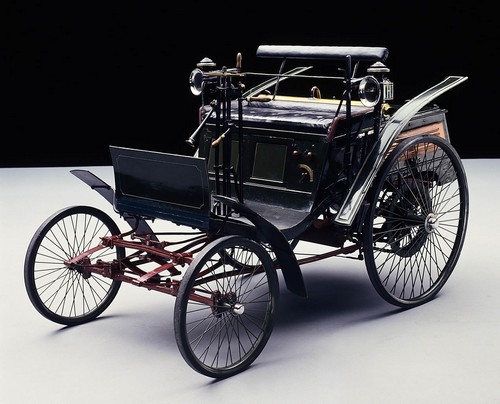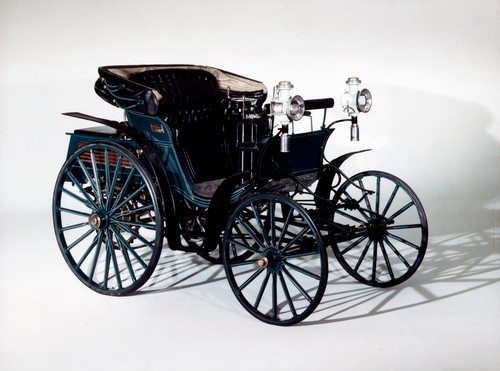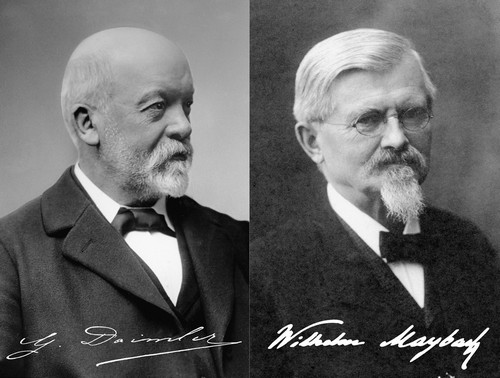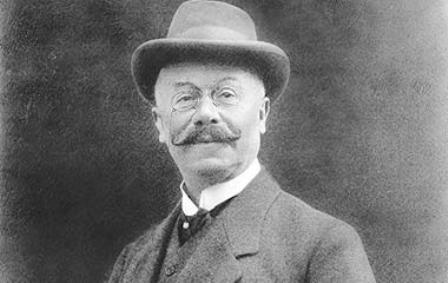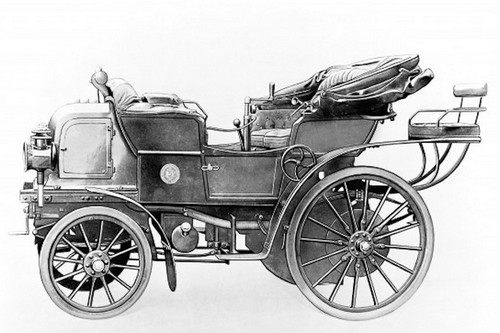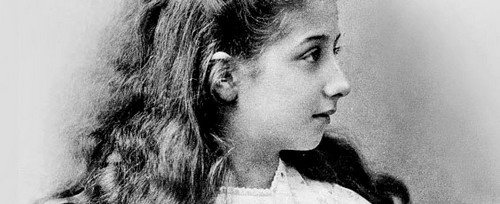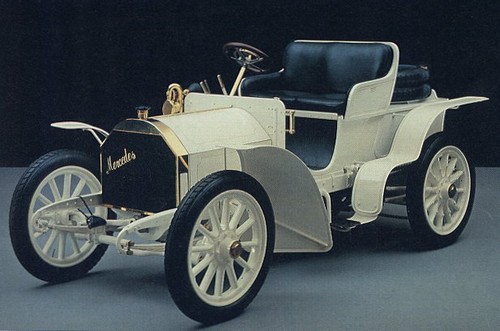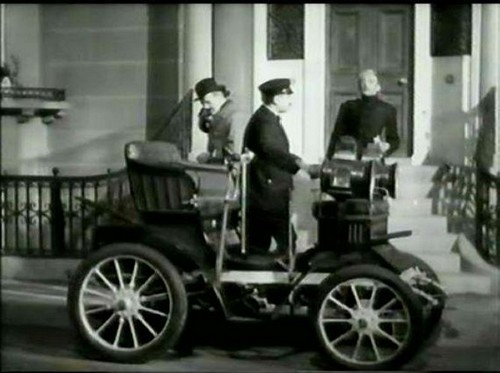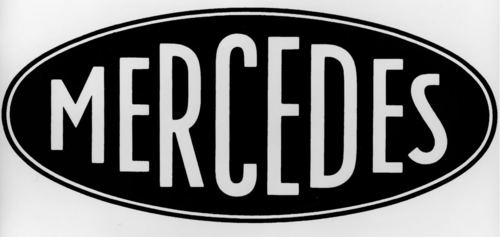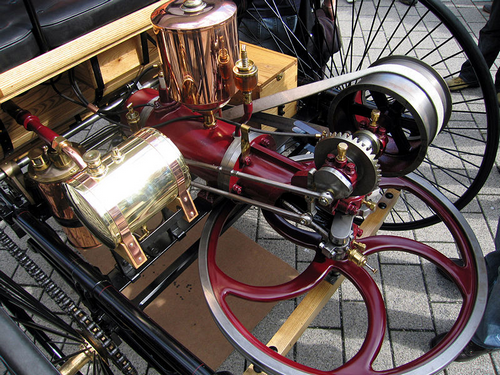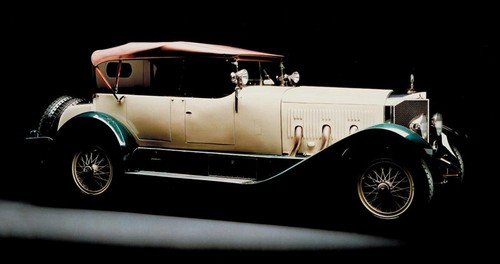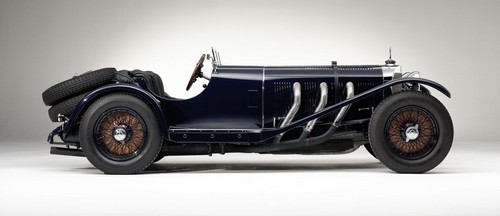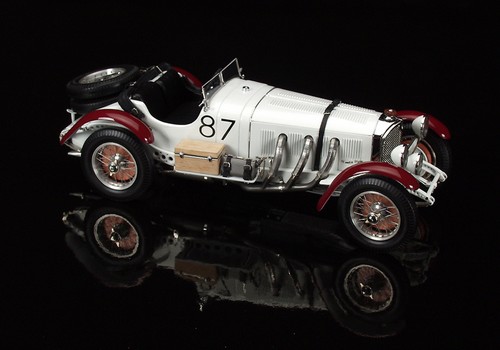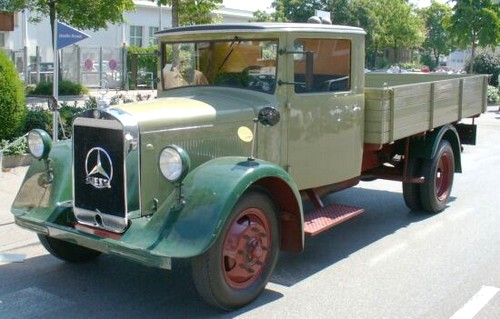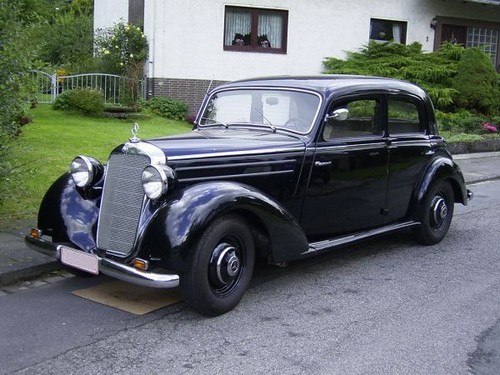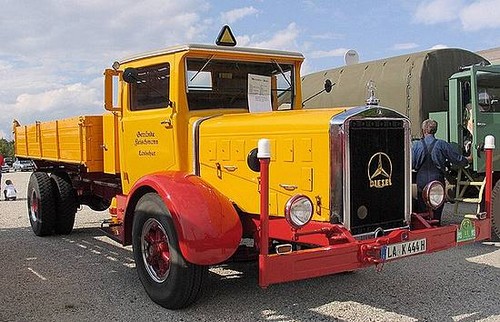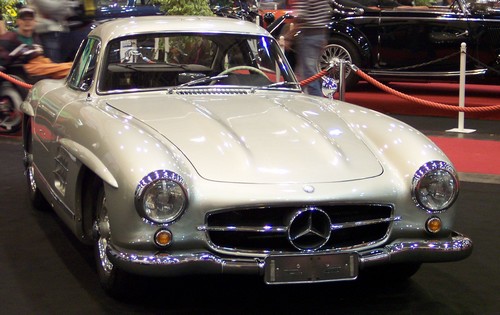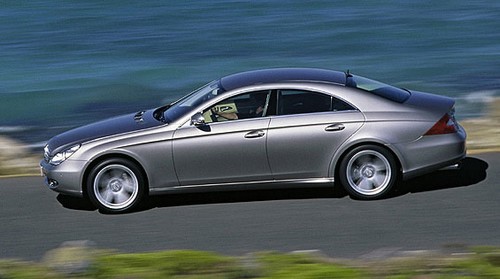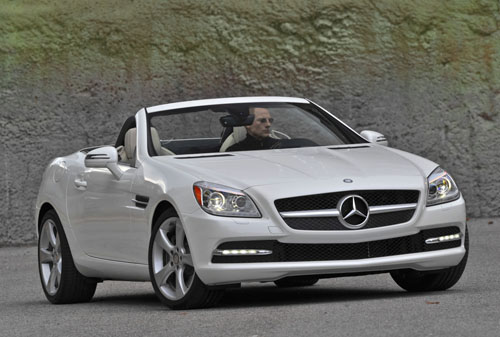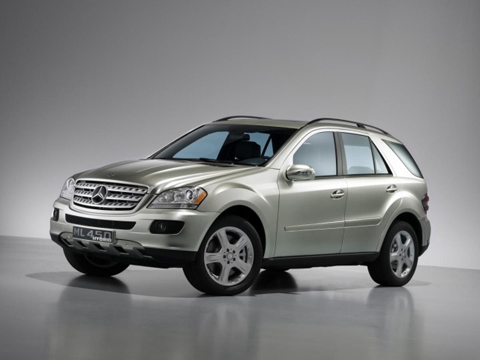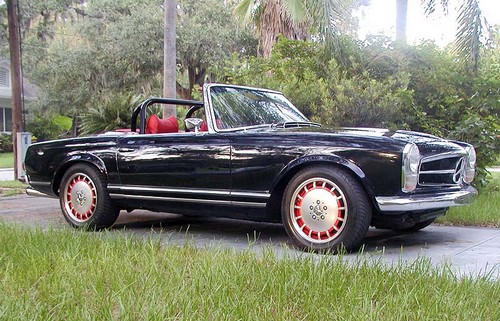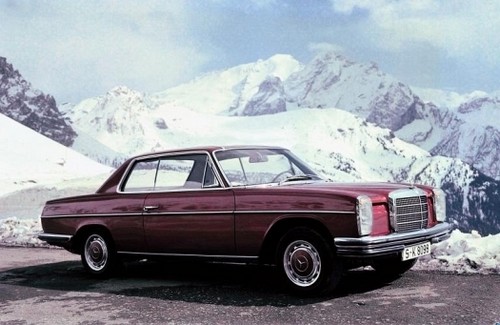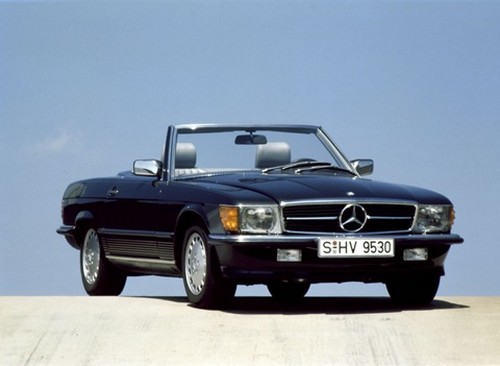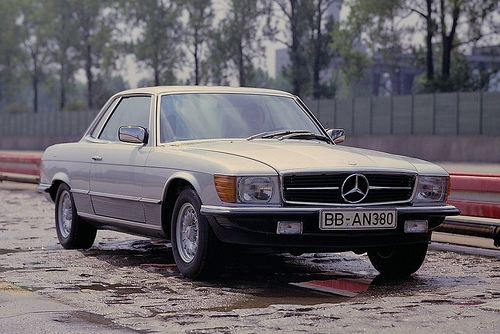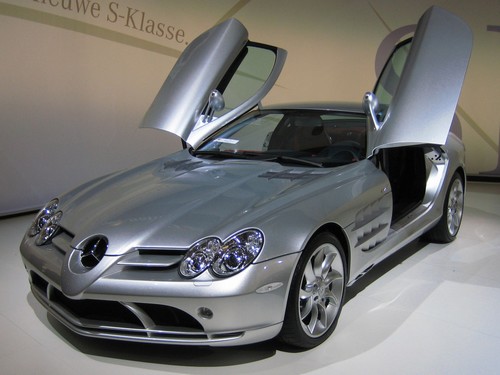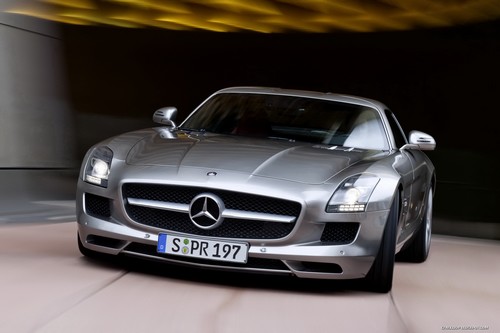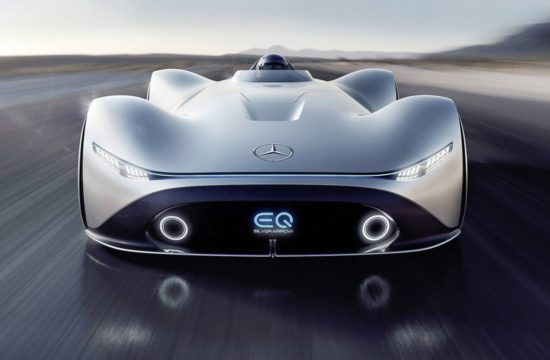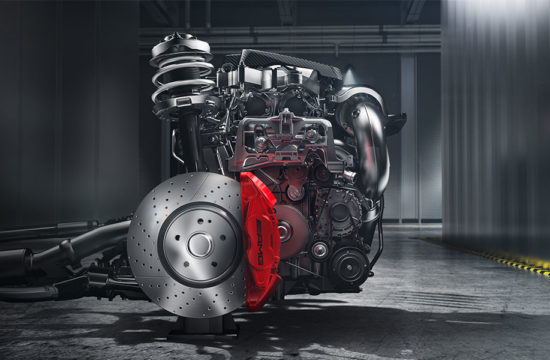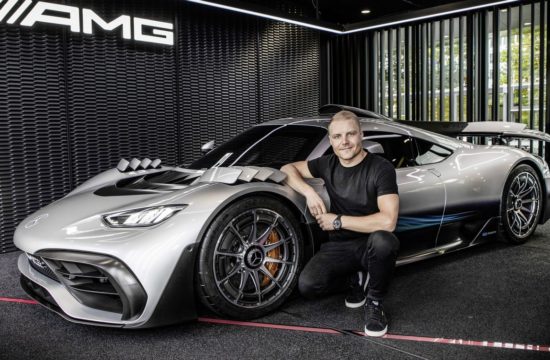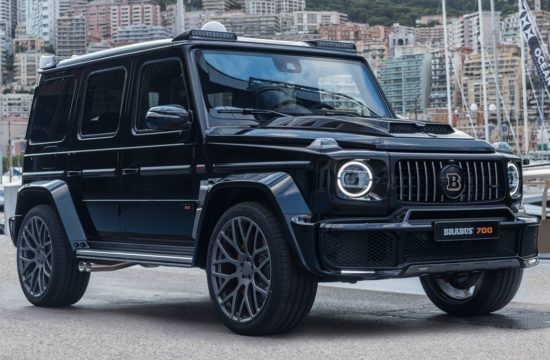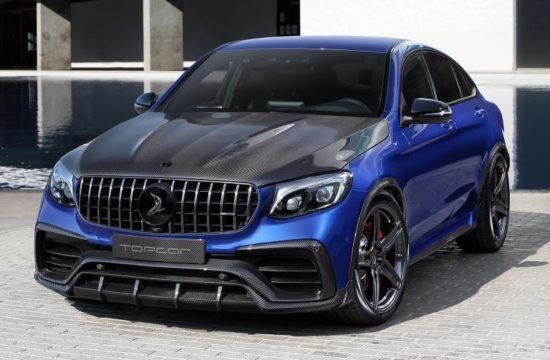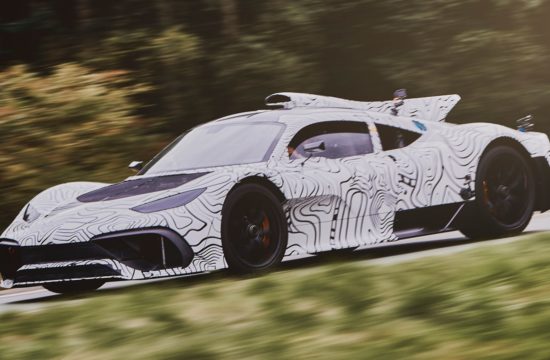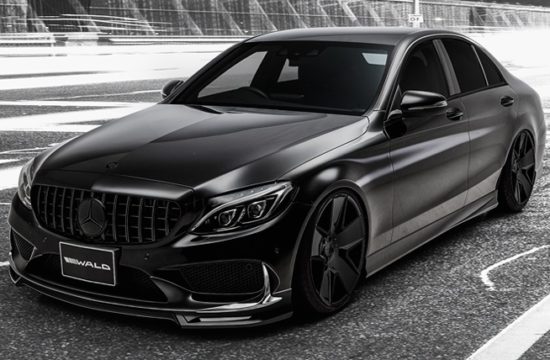The three pointed star on any automobile or on a chain around the neck of a ghetto boy means only one thing, the owner has class, which is exactly the impression Daimler AG, owner of the Mercedes-Benz brand wants you to think and is why they have been accused of not making theft-proof badges for their cars.
Those who can afford to drive a Mercedes can also afford to replace the badge, and wearing the badge around the neck gives a form of street cred money can’t buy. There is a reason thieves don’t steal Lada badges. For a time in the 1980s some Mercedes-Benz dealerships in South Africa would replace the badge free of charge if it was stolen, enhancing the image of a company that cares about its customers and brand.
Most of the recent cars of course now sport a badge mounted flush with the hood making it more difficult to remove, aside from the fact Mercedes-Benz branded cars now cover a wider range of sizes and price points than the company is usually known for. Right from the very beginning of the company’s formation the vehicles produced have always been considered only suitable for those who could afford them, the cars have never been a competitor to Ford.
The last two decades of of the 19th century were a golden age for home inventors who were discovering ways to turn carriage wheels without the use of a horse, thankfully they did, and their ideas are the reason modern transport is so ubiquitous now.
Several engineers and inventors were responsible for the creation of the company that eventually became Daimler AG, most notably Karl Benz who incorporated Benz & Cie in 1883 leading to the first commercially available petrol driven automobile in 1886, and business partners Gottlieb Daimler and Wilhelm Maybach who designed their own engine that could be retrofitted to a stagecoach which in 1890 they did after forming Daimler-Motoren-Gesellschaft (DMG).
The first self-propelled vehicle produced by any of the founders however, was Gottlieb Daimler’s motorcycle of 1885, first ridden by his son Paul, which was powered by a small four-cycle internal combustion engine and a belt to drive the rear wheel. Outrigger wheels were attached to avoid overbalancing, and to the people of his day must have seemed a very strange sight. It was only intended to be a proof of concept.
With large wooden wheels, no suspension, and the center mounted engine riding high above the frame was probably uncomfortable to ride. Fortunately for car enthusiasts the motor cycle concept was ahead of its time, and Daimler moved on to producing 4 wheeled vehicles.
Around the same time Karl Benz was experimenting with a three wheeled car, having successfully patented a two stroke engine in 1879 that led to the invention of the spark plug, a speed regulation system, ignition from a battery, carburetor, and water radiators. Building and maintaining engines paid his bills, and after several financial mishaps, allowed Benz to finally develop the Benz Patent Motorwagen.
His first self propelled vehicle looked much like a two wheeled horse buggy, but with the addition of a large steering bar and smaller front wheel. Unlike Daimler’s motorbike, this was intended for production and featured a comfortable undersprung leather seat, splash guards, and solid rubber coated wire spoked rear wheels. The first prototype was driven in 1885.
By 1886 Benz was actively promoting his vehicle, and had applied for numerous additional patents. The physically large but relatively underpowered 954cc four-stroke internal combustion engine was mounted under the seat, and turned the rear wheels from a chain drive, while a single speed transmission was controlled from a lever on the steering arm. Whilst the design of the vehicle went through several improvements, including a return to wooden wheels like horse driven carriages used, and in 1888 the Benz Patent Motorwagen entered production as the world’s first commercially available automobile.
Perhaps the single biggest event in the early years of motoring that really proved the concept of the internal combustion engine as a replacement for horse drawn carriages and bulky steam driven cars was the supposedly unauthorized drive by Benz’s wife Bertha from Mannheim to Pforzheim, a round trip of 121 miles, proving both that long distances were achievable, and that automobiles had reached a standard of safety that a woman and her teenage sons would feel safe handling. Bertha’s drive unknowingly paved the way for women to gain the right to drive several years later.
Bertha’s drive ironically spurred two further and very important developments in the vehicle that have since become another mainstay of automotive history. Her journey encountered several small hills that the car wasn’t able to navigate due to having only one gear, requiring her to attach a horse, and on downward slopes the brakes were applied so much that new leather had to be nailed to the brakes. Bertha was known to be quite handy mechanically, and her advice led to the invention by Benz of the gearbox, clutch, and replacement brake shoes.
During the 1890s Benz invented the horizontally opposed engine (boxermotor) still used by such marques as Porsche and Subaru, and also finding favor within the racing industry. By 1893 the company was on its way to being one of the largest automobile manufacturing companies in the world, resulting in the development of more affordable vehicles, the Victoria and the Velo, the latter being an entrant in the inaugural Paris to Rouen Rally of 1894. By 1899 Benz and Cie produced 572 units.
On the Daimler side, a series of financial disasters and investor disputes saw Daimler and Maybach leave the Daimler Motoren Gesellschaft company, but in 1896 another prominent investor brought them both back to oversee the technical side of the business, with Maybach becoming technical director. Daimler himself passed away in 1900, and his involvement with the DMG business hadn’t been strong.
The company’s four stroke engines were being successfully used in France where automobile manufacturing had found a market receptive to the technology, as well as through the manufacture of Daimler branded vehicles at the request of Emil Jellinek, an Austrian entrepreneur who found a ready market amongst the society set for comfortable automobiles that were safer and had faster acceleration and better top speed.
Jellinek associated with wealthy Europeans in Vienna, at the time the capital of the Austro-Hungarian Empire, and in Nice on the French Riviera where the gentry holidayed during the winters. He started in business offering insurance and stock-market trading, but after buying his own Daimler and then being asked by friends to supply them. His first car was a Daimler Phoenix Double-Phaeton, a four cylinder car with an 8hp engine and top speed of 15mph, considerably faster than the fastest horses.
Credit for bringing the Mercedes name into the company therefore goes to Jellinek, who had a nose for the future and recognized that horses and carriages were quickly going to become redundant. His instincts turned out to be correct, and after becoming an agent for Daimler vehicles, selling more and more vehicles year after year, and after several upgrades to his own personal car, Jellinek won all five of the French Riviera races in 1899, reaching a top speed of 22mph, but this was still too slow for Jellinek who probably should have been born 50 years later.
Daimler sold 140 vehicles in 1899, but the future of the company was just beginning. Gottlieb Daimler was severely ill so Jellinek and Maybach negotiated a contract to supply 36 Mercedes branded vehicles, and gave Jellinek exclusive licenses to sell the Daimler Mercedes cars in France, Austria, Hungary, Belgium, and the USA. His race success under the team name Mercédès ensured his sales success as well.
The name Mercedes has become such a household name it’s worth knowing why Jellinek chose it. His first daughter Adrienne Manuela Ramona Jellinek was nicknamed Mercedes in honor of the good fortune Jellinek and his wife Rachel had enjoyed together until her death 4 years after Adrienne’s birth. His own sons described Jellinek “as superstitious as the ancient Romans”, who met his shepherdic Jewish wife in North Africa after an unhappy early life in Europe. As early as 1897 Jellinek sold cars were known as Mercedes cars.
Emil Jellinek, Wilhelm Maybach, and the Daimler company went from strength to strength during the 1900s, as well as becoming estranged from each other, but the legacy of their work together in 1901 along with Gottlieb’s heir Paul resulted in the most famous of all the Mercedes branded vehicles, and the first to designed with automotive engineering principles in mind, rather than as a horseless carriage. The car was the Mercedes 35hp, and is today considered to be the first modern car.
With a lower center of gravity due to the engine being mounted over the front axle, and lighter steel body and chassis using pressed steel in the frame, it was possible to reduce the weight of the car to just 2,645lb. Jellinek paid 500,000 deutschmarks to have the cars built, receiving his first vehicles in time to start racing them seriously, and with his German driver Wilhelm Werner successfully dominated the Nice-La Turbie race of March 1901 and reaching top speeds of 53mph.
Eventually the road version was upgraded with the addition of rear seats, becoming a family car. In September 1902 the Mercedes trademark was registered by Daimler Motoren Gesellschaft, since almost all of their production was going into manufacturing Mercedes badged vehicles. In addition, DMG recognized that they had effectively ceded the Daimler name in France to Panhard & Levassor, a company that was selling automobiles with a Daimler engine in direct competition with Jellinek, and selling engines to Armand Peugeot whose cars were proving very popular, as well as a somewhat worthy race contender.
In the British Empire Daimler had also developed a good reputation under the licensing deal signed with Frederick Simms, a friend of Gottlieb Daimler’s who was selling the Phoenix engine after buying the rights to all Daimler patents in British controlled territories. So cosy was the relationship that Gottlieb Daimler became a director of the British registered Daimler Motor Syndicate Ltd (DMS), while Simms sat on the board of the German DMG.
From England DMS incorporated the Phoenix engine in motorboats and self-propelled machine guns, and from 1895 the company started importing Panhard & Levassor automobiles, and then from 1896 Peugeot cars as well. All were branded with the Daimler name, but in 1987 Simms and his business partners started designing their own cars, which included a re-engineered Phoenix engine. Production increased dramatically within months to 3 vehicles per week, as well as cars made under license from Leon Bollee, a French automotive company that had started producing steam powered vehicles and was in the 1890 making a tandem two seater.
Whilst Daimler in Germany went on to produce the successful 35hp, in Britain Daimler continued their separate way, being better known for producing luxury vehicles for the very wealthy. In many ways the two Daimlers operated so distinctly that the name was all they shared. In Austria another company, Austro-Daimler, with the rights to the Daimler name also started manufacturing engines under license, as well as their own vehicles. The German Daimler company never quite managed to become successful enough to buy back their patents and rights to the name, so it was hardly surprising they agreed to trademark the Mercedes name.
The first decade of the 20th century was probably the most interesting in the history of the development of the automobile, almost all of the technology needed to produce touring cars had been invented and was ready to be refined, and this was also the era of the first true trucks, which revolutionized freight transportation leading up to the first world war.
The invention of the internal combustion engine allowed power to be generated easily using plentiful petroleum, and both Benz and Daimler were world leaders. Transport until then had been severely restricted to trains and sea craft. However manned flight opened new avenues for engine manufacturers, with airships in particular taking advantage of the power of the internal combustion engine to power rotating blades for gentle thrust. The origin of the Mercedes three pointed star goes back to this era, and stands for “mobility on land, on water, and in the air”.
The first world war were interesting times for both Benz and Daimler, the two companies were still competitors in the automobile market, but war production required them to change production to engines for aircraft and trucks, as well as building trucks and armored vehicles for the German war effort. For Daimler this meant breaking off ties with their French, British, and North American licensees.
The German recession after the end of WWI was the catalyst for the full merger of Benz a& Cie and Daimler Motoren Gesellschaft in 1926, coming together as Daimler-Benz, and marketing all future vehicles as Mercedes Benz with the unique three pointed star emblem. With new companies manufacturing vehicles for the war effort and domestic car production, and a combination of terrible recession in Germany, Benz and Daimler suffered huge market share losses after the first world war, and both nearly went out of business.
The years 1914 until 1919 were disastrous for automotive development in Germany, all design work went into improving the war effort, unlike the Americans who were able to continue development, and as part of the German surrender were able to enter European markets that had previously been too competitive for them. Reverting back to models that had been successful before the war put Benz and Daimler at a distinct disadvantage. For a time Daimler even used their plants in Berlin to manufacture bicycles and typewriters. Neither products really exemplified the luxury branding Daimler had become known for, and were a knee jerk reaction to having too much production capacity after the war, and no products to develop.
In 1926 Germany’s biggest bank, Deutsche Bank, brought Benz and Cie and Daimler Motoren Gesellschaft together in a merger that saw the combined company become known as Daimler-Benz, with headquarters in Berlin, the national capital, and production of automobiles remaining in Stuttgart. To this day Stuttgart is still known as the home of Mercedes-Benz cars, trucks, and other vehicles. The combined company threw out all their previous car models and chose to develop a new car, the Mercedes S, based on the best ideas of the merged engineering and design team headed by Ferdinand Porsche, the same designer of the Volkswagen Beetle and creator of the sport marque Porsche.
The decision made by Porsche and the directors of Daimler-Benz to refocus on the luzury and mid-priced market with a new design paid huge dividends as Mercedes-Benz cars quickly gained a new reputation for quality in a motor vehicle that looked very stylish with long sweeping front wheel guards, a short windscreen, and tapered downwards back end. A rounder and shorter model Mercedes SSK became the company’s flagship racing car, and invented the term “German Engineering” in foreign markets.
Manufactured between 1928 and 1932 the SSK took 19 inches from the standard S and SS models, and was sold with a supercharged 7 liter overhead cam straight-6 that was capable of a top speed of 120 mph. Between 1929 and 1931 the SSK and SSKL variant took gold in most of the major long distance races from Europe to South America though less than 40 vehicles on the SSK line were ever manufactured. Only 4 are still in existence and over bid whenever they hit auction.
In 1927 Daimler-Benz started actively marketing their Lo 2000 truck, a 2-ton flat bed with a 5 cylinder diesel powered engine, and covered seating for driver and passenger. Whilst smaller than pre WWI Benz trucks at 3 tons, the Lo 2000 quickly found a niche amongst delivery companies. Trucks and other commercial vehicles were part of the core product line, and the Lo 2000 encouraged further small vehicles such as the 1.5 ton variant extensively used for military purposes because it was capable of transporting 7 soldiers plus driver.
The first Mercedes Benz automobile with a fixed roof debuted in 1931, known as the model 170, squarer and with four doors, the sedan became popular with families and taxi drivers, and sported opposing front and rear doors with a large luggage trunk attached to the rear of the car. Unlike the S model, the 170 variants were intended to be affordable family cars so were designed with 4 cylinder engines.
Several variants were produced including station wagon, panel van, cabriolet, and a dedicated taxi version. Post war models had a redesigned tail to include a built-in trunk, instead of the removable trunk from pre-war versions. The front wheel faring also went through several designs becoming fuller and curvier. The Mercedes 170 series continued in production through till the mid 1950s despite 8 years of the company being part of the Nazi military supply chain, and a year after Germany’s defeat rebuilding plant.
By 1935 it was obvious Germany was rearming, and the Daimler-Benz truck plant at Woerth was instructed to develop a larger truck that could carry heavy goods and a larger number of soldiers, the 7 ton L6500 being the workhorse that came out of Woerth in response to Wehrmacht demands. After the start of hostilities Daimler-Benz plants were given extra protection in the form of anti-aircraft guns and security details, mostly because without the aircraft engines and military trucks being produced Germany’s war effort would have collapsed.
In fact by 1942 all civilian vehicle production had stopped to make way for extra production of the LG3000 truck, whilst on the factory floor more and more workers had been drafted to the armed forces leaving the company desperately short of staff. To make up numbers women were employed, and when this too proved inadequate to produce at full capacity the Nazi government loaned forced laborers from prisoner of war and concentration camps to Daimler-Benz.
Germany’s capitulation in 1945 had immediate and disastrous repercussions for the company, with all of its plants in the east of Germany except for Marienfelde in Berlin lost to Soviet occupation. Daimler-Benz assets in other parts of Europe and around the world were also lost as part of Germany’s compensation duties, and for the remainder of 1945 Daimler-Benz simply became a repair shop for allied (mostly American) vehicles based in Germany. All of the senior management were sacked in denazification moves, but a former director, Oto Hoppe who had been forced to resign by the Nazis over his Jewish wife returned to the board.
January 1946 Daimler-Benz was issued a permit to start manufacturing vehicles again, beginning with trucks and spare parts since most production during the war had been geared this way and the plant and tooling was able to be repaired quickly. Former plants abandoned during the war years in the push to increase military production were returned to the company as well, luckily with almost all tooling for the model 170 intact. By 1947 Daimler-Benz was back in full production, but with older models again, just like after WWI.
Whilst the Mercedes 170 was a well designed vehicle for its era, the fact is that Mercedes Benz as a renowned German brand didn’t really get the attention it deserved until the beginning of the 1950s, a period even Daimler-Benz call their economic miracle. 1954 was the year the Mercedes brand shook automotive history with the launch of the 300 SL Coupe with gullwing doors, leather and wool trim, and the iconic silver paint finish that gleamed and became the car of the decade.
Described as the race car for the street, the 300 SL was the fastest production car in its era, with unmatched performance and handling, and over 1,400 of the beasts were imported into the United States in a variety of colors, as well as in convertible style, thus launching the Mercedes brand globally. Based on the ’52 sport car raced by Daimler-Benz, the 300 SL was first proposed by Max Hoffman specifically for the American market, the 300 indicating a 3 liter fuel injected straight-6, however fuel injected was provided through a Bosch mechanical system that continued injecting fuel into the cylinders after ignition had terminated, and before the vehicle came to a rest, an unhappy situation that forced car owners into costly maintenance.
Despite this setback the car was still the fasted production vehicle in it’s day, with a top speed clocked 161mph (260km/h), plenty fast enough for men of the 50s whose mantra was becoming work hard play hard. Fast production vehicles were the toy of choice in the day when driving was considered an essential display of manly prowess.
In a return to the days of Daimler and Benz separately being amongst the top cars in road races, the 300SL marked Daimler-Benz’s return to top form in competitive driving, taking overall first in the Le Mans 24 hour in 1952, the Carrera Panamericana in Mexico, and in Germany’s Eifelrennen at Nürburgring, and in all races beating the emerging Ferrari and Jaguar teams with a less powerful car.
Helped with lower weight and better aerodynamics the 300 SL proved that more powerful engines weren’t always better, and cementing Daimler-Benz as a manufacturer controlled by engineers who knew cars. Success on the race track was matched by the increasing internationalization of Daimler-Benz again as the company expanded production to South Africa, Brazil, India, Argentina, Turkey, and Iran along with a significantly broader selection of vehicles including heavy trucks and specialty vehicles for military, fire fighting, public transport, small delivery, and family oriented passenger cars.
Soon after, Daimler-Benz agreed to buy Auto-Union, a deal that gave the company two extra plants in Germany to increase production of passenger vehicles. It was at this time the highly successful Unimog truck company was bought, a truck which continues in active development 60 years after the first model was released to the public. The company was growing from strength to strength as the 1960s approached, and with ever more demand for cars a new system of manufacturing was developed.
Upto the middle of the 1960s all Mercedes Benz SL vehicles were hand assembled and rolled around the factory floor for completion, whilst the bigger selling standard models were hand assembled on a conveyer belt system. Aside from technological advances or the creation of the automobile, the single greatest innovation in the manufacture of Mercedes cars came with the decision to merge all new models into a single platform rolling on the same production line. The cost of production came down as all models incorporated the same base floorpan.
Starting with internal model number W108 to W111, which included several variants with engine sizes from 2.5 liters to 6.3 liters in the same family, Mercedes cars sales boomed as cars could be made quicker to limited customer requests. Within this family came the 230 SL, 250 SL, and 280 SL, together selling 48,912 cars over an 8 year period.
The 280 SL in particular has been described as one of the best cars ever made by Daimler-Benz from Top Gear presenter Jeremy Clarkson who also stated that this is one of the few cars of the 1960s to have stood the test of time, being “from a time when Mercedes was still building its cars properly”.
From 1968 the W114 and W115 in a saloon and coupe model were in production lasting until 1976 and selling over 1.9 million vehicles. This was a completely different platform billed as an executive car, and no SL variant was produced, and defined the square shape of Mercedes vehicles offered to the market during the late 60s, 70s and most of the 80s. Despite their less than inspiring shape, the marque had reached a level of acceptance within the middle classes that to own a Mercedes added prestige.
It was this design philosophy that led to the introduction of the one of the longest running series of Mercedes ever produced, the R107 (SL) and C107 (SLC) models, of which the most famous is without doubt the 450 SL and 450 SLC, a type that even today continues to be popular in the second hand market.
The range was also one of the most extensive produced with engine sizes from 2.8 liter to 5.6 liter and roadster or coupe body styles.
Thankfully the mid 1990s saw the Daimler-Benz design team finally throw away the tried and true box mindset and embrace styling that a car owner would be proud to have sitting in their drive, with swept back front grills, the removal of the 3 point star that could be stolen in favor of a discreet badge lying flush to the body, and more tapered rear from roof to trunk. Production numbers have continued to rise for the company, which regularly produces nearly 2 million vehicles per year since the turn of the century.
Sport vehicles have been radically re-engineered in conjunction with the AMG marque owned by Daimler-Benz, or in association with McLaren Cars and more models are more correctly termed supercars rather than just production sport cars, the 2003-2010 SLR and 2010 SLS being two examples that have no fear and will take on a Porsche, Audi, or Ferrari on any road.
Since the introduction of the 2010 SLS and its gullwing doors, a direct memory of the 300 SL from 50 years ago, Mercedes have also begun to target buyers who have more disposable income and are looking for a distinctive automobile that screams “I have money”.

